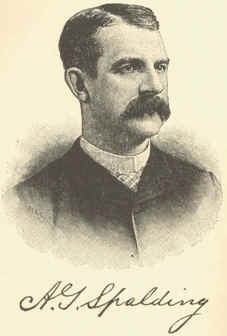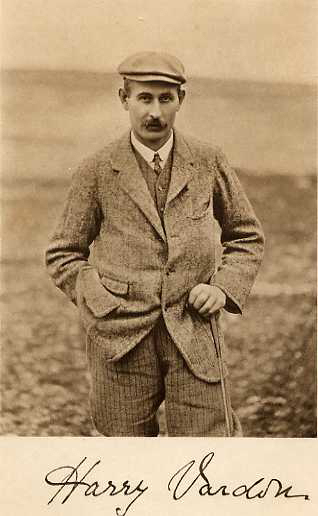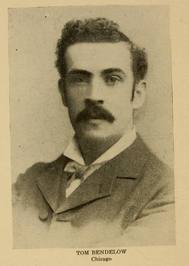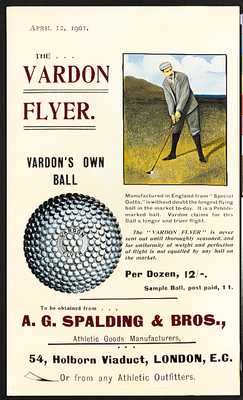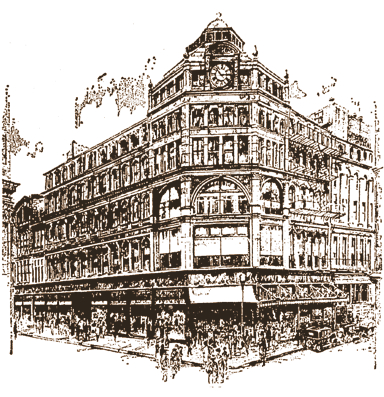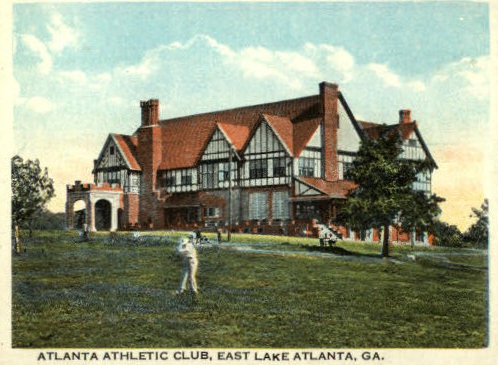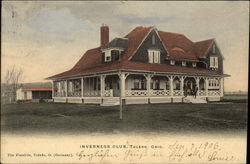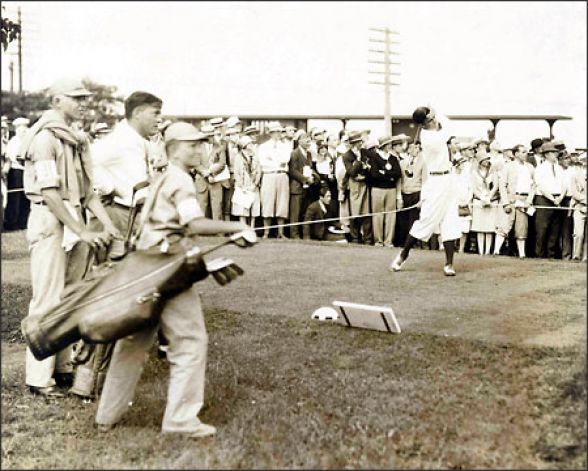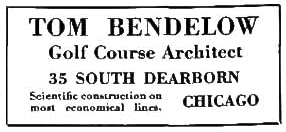Harry Vardon & Tom Bendelow
American Golf's Twisted Pair
|
|
Young Scotsman Thomas Bendelow came to the United States in 1892, to work as a typesetter for a New York City newspaper. While setting type for the classified ads he came across one placed by Standard Oil of New Jersey Vice President Mr. Prata for a golf instructor to teach his young family the game at their Oyster Harbor estate. Having played the game as a youth he felt qualified for the position and obtained an interview with Prata. He was hired for the position partly because he was clearly a Scotsman and it was believed at the time that if a man was from Scotland he was probably a golfing expert. Upon arrival his first day Bendelow finding no golf course, immediately stakes out a 7 hole course covering a great deal of the Oyster Harbor estate, leaves the rest to the gardeners and begins his golfing instruction of the Prata family. In fairly short time his first golf course is taking shape, as it should having been built on the manicured grounds of Prata's estate and tended by Prata's gardeners. When the Prata family had learned the basics of the great game of golf Bendelow decided it was time to move on. |
Again his Scottish brogue leading all to accept his assumed golfing expertise, Bendelow turns his "golf course design and construction experience" as well as his teaching professional status into the head green keeper's job at Van Cortlandt Park Golf Course, New York City's famous municipal course in the Bronx. Right off he rebuilds the original nine holes and then designs and adds a second nine making The Van Cortlandt Park Golf Course the first public 18 hole course and cementing Bendelow's status as a golf course architect.
|
During his 1900 tour (aka The Vardon Invasion) Harry Vardon played at Bendelow's Van Cortlandt Park and walked away impressed enough to invite Bendelow to play an upcoming exhibition match in Connecticut. Although Vardon thrashed Bendelow, his image of him was only solidified and Bendelow ended up as Vardon's caddie and partner for a number of practice matches. Shortly after his Connecticut matches Vardon moved on to Chicago where he captured the 1st US Open of the 20th century at the Chicago Golf Club. It is fun to note that C.B. MacDonald founded Chicago Golf Club, the first 18 hole golf private course in America, in 1892. During his time in Chicago, as his earlier trip, Vardon met on many occasions with his sponsor A. G. Spalding. Spalding, a former baseball star and future Hall of Fame inductee, was an aggressive entrepreneur with a bold imagination. |
|
Spalding had financed Vardon's 1900 tour of America in hopes that it would help him expand his golf equipment business. Things so far were going ok, but both he and Vardon thought something was holding golfing growth in America back, and that something they came to the conclusion was there were simply not enough golf courses, nor enough people with expertise to build them. Spalding's vision seem to explode before his very eyes. He would provide, at no charge, golf course design services to anyone with the desire and finances to build one. Vardon would barely get the name Tom Bendelow out before Spalding hired him as A.G. Spalding and Company's first official golf course expert. Almost instantly Bendelow was off on a multi-year journey that would have him criss-crossing the country traveling anywhere the golf bug seemed to be ready to strike.
|
After he completed his tour Vardon returned to England where his stature as the Greatest Golfer in the world continued to grow. Bendelow in turn continued his tireless journey in which he would layout an estimated thousand golf courses. Many of his courses would disappear over time, others would go on to become famous, others infamous. In 1906 the 25 members of the seven year old East Lake Club decided it was time to expand, and its president George Adair contacted Spalding about Bendelow's services.
Tom Bendelow would arrive shortly there after and lay out a course though simple in its nature would serve as an exhibition stage for a returning Harry Vardon in 1913 and his touring partner Ted Ray. Once again Vardon would draw a gallery of hundreds, and once again his style, form and grace would capture the eye of another young American golfer and future Hall of Fame player, the Greatest of them all, Bobby Jones.
|
|
In the 1920 US Open at the Inverness Club Vardon's path would once again cross with that of young Bobby Jones. Jones playing his first US Open, and Vardon his last, these two golfing greats played two rounds of this US Open won by Ted Ray. The young Jones understandably nervous received this piece of advise from the Great Vardon "Don't give up. Just keep hitting it. Something good might come of it." Adivse Jones carried in his heart the rest of his life.
|
It was during the 1920 U.S. Open that for the first time anywhere, Inverness Club members opened the clubhouse doors to the golf professionals, an act that would be remembered by Vardon the rest of his life. As a remembrance of this gesture, the players of the 1920 U.S. Open took up a collection and presented the Club with a cathedral chime clock on the final day of the tournament. Jones would later lose a 36 hole playoff in 1928 to Johnny Farrell (his only major victory) at the Bendelow designed Olympia Fields Club. It is the last US Open that Jones would enter and not win. In fact Jones would go on to win 6 out of the next (and last 7) major golf tournaments he would play in. |
|
Tom Bendelow would go on to design over 700 courses including a redesign of Apawamis. When complete Apawamis would become a stunning 6280 yard gem that was lauded by Harry Vardon and instantly became a "must play". Another legendary Bendelow golf course is Medinah # 3 course which to date has hosted the United States Open three times.
Also in Bendelow's portfolio of golf course designs is City Park Golf Course in Baton Rouge, the first golf course recognized by United States Department of Interior and added to the National Register of Historic Places
To learn more about
American Golf's twisted pair, continue your search here....
